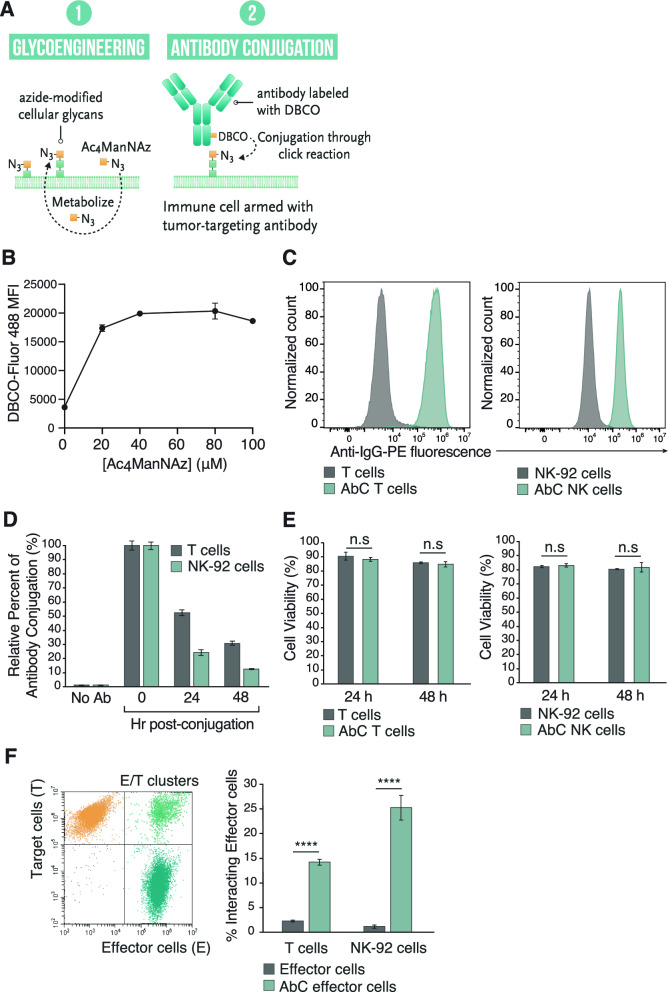Fig. 1.
Generation and characterization of AbC T and AbC NK cells. A AbC immune cell engineering scheme. B Optimization of glycoengineering of activated T cells. T cells were cultured with varying concentrations of Ac4ManNAz and azides were detected using DBCO-Fluor 488 with fluorescence quantified via flow cytometry. C DBCO-Ab conjugation to glycoengineered T (left) and NK-92 cells (right) as measured by flow cytometry. D Stability time course study of AbC T and AbC NK. Relative percent of antibody on surface was calculated with respect to time 0. E Cell viability assay of antibody-conjugated and unconjugated T (left) and NK cells (right) at 24 and 48 h by Trypan Blue exclusion. F Specific binding of AbC T and AbC NK cells to target cells. Effector cells (AbC or unconjugated T/NK) and target cells (L1210) were mixed at 1:1 E/T ratio for 2 h and resulting E/T cluster formation detected by flow cytometry. Cell populations were gated for effector cells, E, (green fluorescence), target cells, T, (violet fluorescence) and E/T with fluorescent emission of both signals using gating strategy shown on left. Percentage of interacting effector cells was calculated (right panel). Data represents the mean ± SD (n = 3). (Student’s t test, ****p < 0.0001, ns not significant)

